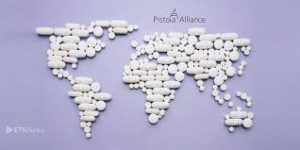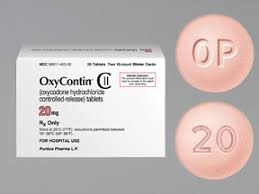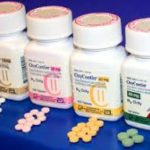This guest post addresses a complex and emotionally-loaded issue: the link between pharmaceutical opiates (and the questionable way they’ve been advertised and marketed) and the current “opioid crisis” or overdose epidemic. Nick does a splendid job of recounting key milestones and contextualizing them within the history of Big Pharma.
Before getting to this post, I just want to alert you to a fact-filled, beautifully referenced and highly detailed website: everything you ever wanted to know about drugs, alcohol, the disease model, addiction, and treatment. I’ve included this link in the list of relevant sites on my homepage.
………………………………………..
…by Nick Johns…
With the number of regulatory departments and protective measures in place today, we as consumers are inclined to believe that a product or service has been proven safe before it’s approved for public use. We’d like to think that if something turns out to be dangerous or harmful, the responsible party will be held accountable and similar situations will be prevented in the future.
Unfortunately, in the complex and tangled world of pharmaceutical drugs, that is frequently not the case. Take for example Pradaxa, an anticoagulant and blood thinner most often prescribed to treat and prevent blood clots and reduce the risk of stroke following hip or knee replacement surgery. The medication managed to obtain FDA approval five years before its reversal agent, Praxbind (an antidote to Pradaxa designed to reverse its effects and prevent uncontrollable bleeding) became available, leading to incidents of severe bleeding and hundreds of deaths.
 Companies with ties to multiple other entities and those that have major influence on the healthcare economy are able to skirt the rules and make deals with federal agencies or court systems to avoid serious legal repercussions. Pfizer, one of the world’s largest pharmaceutical companies, marketed a drug called Bextra in 2001, a Cox-2 inhibitor. While the FDA rejected the drug at high doses for acute surgical pain, Pfizer and its marketing partner Pharmacia pitched it to anesthesiologists and surgeons anyway — at doses up to twice what the FDA had approved as safe.
Companies with ties to multiple other entities and those that have major influence on the healthcare economy are able to skirt the rules and make deals with federal agencies or court systems to avoid serious legal repercussions. Pfizer, one of the world’s largest pharmaceutical companies, marketed a drug called Bextra in 2001, a Cox-2 inhibitor. While the FDA rejected the drug at high doses for acute surgical pain, Pfizer and its marketing partner Pharmacia pitched it to anesthesiologists and surgeons anyway — at doses up to twice what the FDA had approved as safe.
What effect have these historically loose controls had on the present overdose epidemic? Sidestepping regulations to bring potentially unsafe drugs to market is only part of a larger problem, and it isn’t the only method that pharmaceutical companies have employed in pursuit of profit. When it was released in 1995, Purdue Pharma’s now-infamous opiate painkiller OxyContin was hailed as a  breakthrough in pain management. The active ingredient of OxyContin is oxycodone, a long-lasting narcotic with up to twice the strength of morphine (milligram by milligram). Prior to OxyContin, doctors had historically been reluctant to write prescriptions for powerful opioids outside of end-of-life care or acute cancer pain due to fear of the addictive properties of the drugs.
breakthrough in pain management. The active ingredient of OxyContin is oxycodone, a long-lasting narcotic with up to twice the strength of morphine (milligram by milligram). Prior to OxyContin, doctors had historically been reluctant to write prescriptions for powerful opioids outside of end-of-life care or acute cancer pain due to fear of the addictive properties of the drugs.
 In order to shift this perception, Purdue Pharma launched a massive marketing campaign to diminish concerns about addiction and to promote OxyContin as a safe treatment for an increasing range of ailments. At the forefront of the campaign, and differentiating OxyContin from other narcotics on the market such as Vicodin and Percocet, was the patented time-release formula — a characteristic which Purdue claimed was responsible for the drug’s purported addiction rate of “less than 1 percent”. This, employees of Purdue claimed, made the drug a safe choice for CNCP (chronic non-cancer pain) patients.
In order to shift this perception, Purdue Pharma launched a massive marketing campaign to diminish concerns about addiction and to promote OxyContin as a safe treatment for an increasing range of ailments. At the forefront of the campaign, and differentiating OxyContin from other narcotics on the market such as Vicodin and Percocet, was the patented time-release formula — a characteristic which Purdue claimed was responsible for the drug’s purported addiction rate of “less than 1 percent”. This, employees of Purdue claimed, made the drug a safe choice for CNCP (chronic non-cancer pain) patients.
 In an effort to maximize the efficacy of their marketing efforts, Purdue compiled profiles of doctors and their prescribing habits into databases used to identify where their campaigns would have the most success. This aggressive marketing tactic coupled with an incredibly lucrative bonus structure for sales representatives (a range of $15,000 to nearly $240,000 on top of a representative’s average annual salary of $55,000 in
In an effort to maximize the efficacy of their marketing efforts, Purdue compiled profiles of doctors and their prescribing habits into databases used to identify where their campaigns would have the most success. This aggressive marketing tactic coupled with an incredibly lucrative bonus structure for sales representatives (a range of $15,000 to nearly $240,000 on top of a representative’s average annual salary of $55,000 in  2001) led to a tremendous increase in the number of visits to physicians with higher than average rates of opioid prescription. While pitching OxyContin, sales representatives for Purdue even reportedly claimed to some healthcare providers that the drug, now frequently compared to heroin in terms of potency and risk of addiction, didn’t even cause a buzz.
2001) led to a tremendous increase in the number of visits to physicians with higher than average rates of opioid prescription. While pitching OxyContin, sales representatives for Purdue even reportedly claimed to some healthcare providers that the drug, now frequently compared to heroin in terms of potency and risk of addiction, didn’t even cause a buzz.
For millions of patients, a prescription for OxyContin provided crucial relief from debilitating pain. For many, however, addiction became so severe that the period of withdrawal between doses became unbearable — especially if the recommended dosage was exceeded. Purdue’s marketing campaign for OxyContin reached its peak in the early 2000s, and sales of prescription opioids (with Oxycontin in the lead) quadrupled between 1999 and 2016. During that same period, over 200,000 people died in the U.S. from overdoses related to prescription opioids — with many cases involving a mix of other drugs and/or alcohol.
While federal regulations have since cracked down on OxyContin and tightened around pharmaceutical practices, the opioid epidemic is far from over. Patients addicted to prescription painkillers can eventually find them too expensive or too difficult to obtain, and may turn to other drugs instead — heroin in particular. Drug-related deaths are climbing at an alarming rate, and many can be linked to the addition of fentanyl to street drugs. But there’s little doubt that Oxycontin prescriptions greatly contributed to a wave of addictions that has yet to subside.
With prescription opioids potentially serving as dangerous gateways to fentanyl-laced illicit drugs, it’s clear that attention needs to shift to pharmaceutical companies, hospitals and physicians. Doctors and healthcare professionals can help by screening and regularly monitoring for substance overuse or addiction, and by prescribing painkillers only when other treatment options have proven  ineffective. Patients can help by never sharing or selling prescription pain medications, and by taking steps to ensure that they are the only ones with access to their painkillers. Friends and loved ones can help by monitoring patients for correct usage of prescription pain medications, staying alert for any signs of prescription drug overuse, and questioning and challenging potentially dangerous habits before they become entrenched. The battle can be won, but we all must fight together.
ineffective. Patients can help by never sharing or selling prescription pain medications, and by taking steps to ensure that they are the only ones with access to their painkillers. Friends and loved ones can help by monitoring patients for correct usage of prescription pain medications, staying alert for any signs of prescription drug overuse, and questioning and challenging potentially dangerous habits before they become entrenched. The battle can be won, but we all must fight together.

Leave a Reply